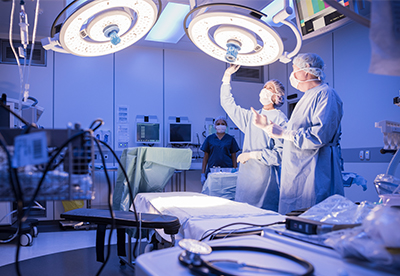The medical devices industry has traditionally allowed much of the data it collects to go unused. However, it is now waking up to the opportunities and is beginning to consider the possible benefits of investing in M2M data analytics. In addition, policy incentives, pressure to deliver more with less and fixing accountability for care is transforming the healthcare industry and driving a renewed interest in leveraging M2M data.
According to Harbor Research, the number of medical devices shipped is likely to reach 32.7 million by 2014 from a mere 6.2 million in 2009. Also, the number of connected M2M devices in the healthcare sector will swell to 774 million by 2020. This generates unprecedented opportunity for data collection and analytics.
M2M technologies such as blue-tooth, RFID, motion sensing and wireless are being used in patient monitoring devices. Consider the example of glucose monitoring. Today, several diabetics wear a continuous glucose monitor. The M2M module embedded directly into the sensor sends the information to a monitoring service. According to a research report by Berg Insight, globally, around 2.8 million patients were using a home monitoring service for medical devices with integrated connectivity at the end of 2012.
Medical device companies have been seeking to develop ways of leveraging technology, establishing best practices by understanding how customers successfully utilize their devices and ensuring that the devices work seamlessly in an interoperable manner.
When integrated and analyzed for decision-making, the information from M2M enables proactive service, allows for consumption-based business models and drives recurring revenue and improved customer experience. An integrated medical device data model entails that siloed data in disparate systems be brought together, and advanced analytical models deployed.
The benefits of M2M adoption in medical devices are numerous and can help medical device manufacturers differentiate in the front by delivering optimal customer experience and service and standardize at the core by reducing operating costs and building efficiencies.
While this trend picks up in the industry, what according to you can provide the requisite push to accelerate adoption?
Jyotirmay Datta - Global Industry Head, Medical Devices, Wipro Limited
Jyoti comes with more than 20 years of experience in the IT industry in various sales, business management roles. He has been with Wipro for the last 15 years. Currently he is the Vertical Head for devices business in Healthcare & Services Strategic Business Unit. In this role, Jyoti is responsible for Wipro's business for all service offerings which includes R&D services, IT services and BPO.
Jyoti joined Wipro as the Regional Sales Manager for its Software Products Division. Later, Jyoti had been heading the business for one of Wipro's top 10 customers for 6 years, first as a Strategic Relationship Manager, then as a Client Partner and finally as a CEM.
He led the business development effort for R&D services in the US, North-East region based out of Boston for 6 years. Before joining Wipro, he spent 6 years in different sales positions, selling super-mini and mainframe computers in the Indian market from Data General, US; ICL, UK and Fujitsu, Japan.

The purpose of this paper is to describe the importance of Risk Analysis, Risk Management Process, Application of Risk Management tools, and the benefit of the Risk Management Analysis.

How sustainable growth through innovation and market repositioning can drive the MedTech industry in India forward

The need for “plug-and-play” interoperability – the ability to take a medical device out of its box and easily make it work with one’s other devices or applications– has attracted great attention from both healthcare providers and industry.
